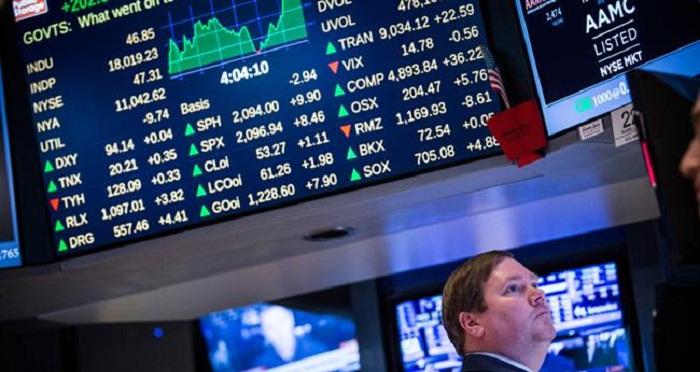By raising interest rates on Wednesday the Fed removed one major source of uncertainty, leaving developments in China at the top of investors` and policymakers` watch lists, alongside the Fed`s next steps.
China accounts for more than 10 percent of global trade and remains the single biggest contributor to global growth. A financial market selloff in China sent ripples around the world and caused the Fed to stay its hand when it considered a rate hike in September.
If anything, China`s influence is growing. If Beijing allows the yuan to weaken further and re-pegs it to a basket of currencies instead of just the dollar, it could end up exporting deflation that might delay or reverse rate hikes globally.
"We try to get the best information we have... and we talk to everybody. But I don’t think we have any better information than anybody else," James Bullard, President of the Federal Reserve Bank of St Louis told Reuters.
Economists have questioned China`s economic statistics for years and turned to measures such as concrete, steel or electricity production to get a handle on an economy that has grown almost 10 percent a year for 30 years.
Now such gauges are less useful as China shifts to a harder-to-measure services economy from an export-driven manufacturing giant.
"I don’t think the Chinese government has that good information,” said Bullard.
SCANT CONTACTS
The issue, according to Fed insiders, former Fed employees and economists is that while the Group of Seven top industrial nations share a common policy language and well established communications channels, they are less developed at the Group of 20.
Neither does the People`s Bank of China send policymakers to international economic meetings where they could mingle with top officials from the Fed, ECB, BOJ and other central banks.
Former and current Fed officials say there is no official hotline with China, although there is formal interaction.
"Almost uniformly, from central banks and international organizations, what I hear is that the Chinese side is reluctant to engage," said Michael Spencer, Deutsche Bank`s Asia-focused economist.
An examination by Reuters shows the Fed relies on the same publicly available China data that other economists do, and U.S. central bankers acknowledge both publicly and privately that they cannot say they have any firmer handle on how shifts in the Chinese economy affect the United States than anyone else.
Both the Fed and the European Central Bank have small but growing cadres of analysts who specialize in China. The Fed, for its part, is now churning out at least one paper on China each month, compared with only three or four a year a decade ago, a Reuters analysis shows.
That is not counting the unpublished policy briefings and internal modeling that insiders say inform decisions, such as the Fed`s September call to keep rates on hold.
Mark Speigel from the San Francisco Fed says his own research reflects the increased interest. A few years ago his main focus was on Japan, but now he devotes most of his time to China.
Officials from Fed Chair Janet Yellen down do have regular contact with Chinese central bankers and other government officials. On Oct. 8, for instance, Yellen spent 30 minutes with the deputy governor of the People`s Bank of China at the G-20 meeting in Lima, Peru, her schedule shows. The Fed would not comment on what was said.
San Francisco Fed President John Williams, who makes an annual swing through Asia with Board Governor Jerome Powell, has said his meetings with Chinese officials give him greater confidence the authorities there will engineer a smooth transition from an export-led economy to a domestically driven one, even if that pivot is faster than expected.
"The shift is happening quickly," Williams said last month.
BLACK BOX
Still, despite economic data that some say is improving, China remains a black box in many respects. One of the challenges is simply the pace of structural change that makes historical data less useful in predicting future trends.
Even Chinese officials acknowledge their statistics raise questions. Premier Li Keqiang said in 2007 that the country`s data were "man made".
Senior staff at major central banks in Europe say they have built up competence on China in recent years, but that gaps in data, plus the sheer pace of change make it a challenge.
They point to a lack of an import price index or comprehensive demand side data for national accounts as some of the obstacles.
The Reserve Bank of Australia has 10 analysts in its Beijing office churning out research on everything from wealth management to capital flows. The Bank of Japan also an office in the Chinese capital.
The RBA declined to comment directly for this story, although Assistant Governor and head of economics Christopher Kent told a conference last month the researchers helped the bank get a "feeling on the ground".
"They obviously talk a lot to the various authorities in Beijing, and travel a lot around the country."
Besides China`s direct impact on the U.S. economy, the Fed is also concerned with the effect lower Chinese demand for commodities has on economies such as Australia, Canada and Chile.
One of the first things the new Dallas Fed President Rob Kaplan did after taking office in September was to get his researchers to crunch numbers on China.
His staff estimates that each percentage point decline in China growth trims 0.2 percentage points from U.S. GDP growth.
"Understanding China’s slowdown is essential because China is still the largest individual contributor to global growth," Kaplan said in his first speech in the new role.
More about:
















































